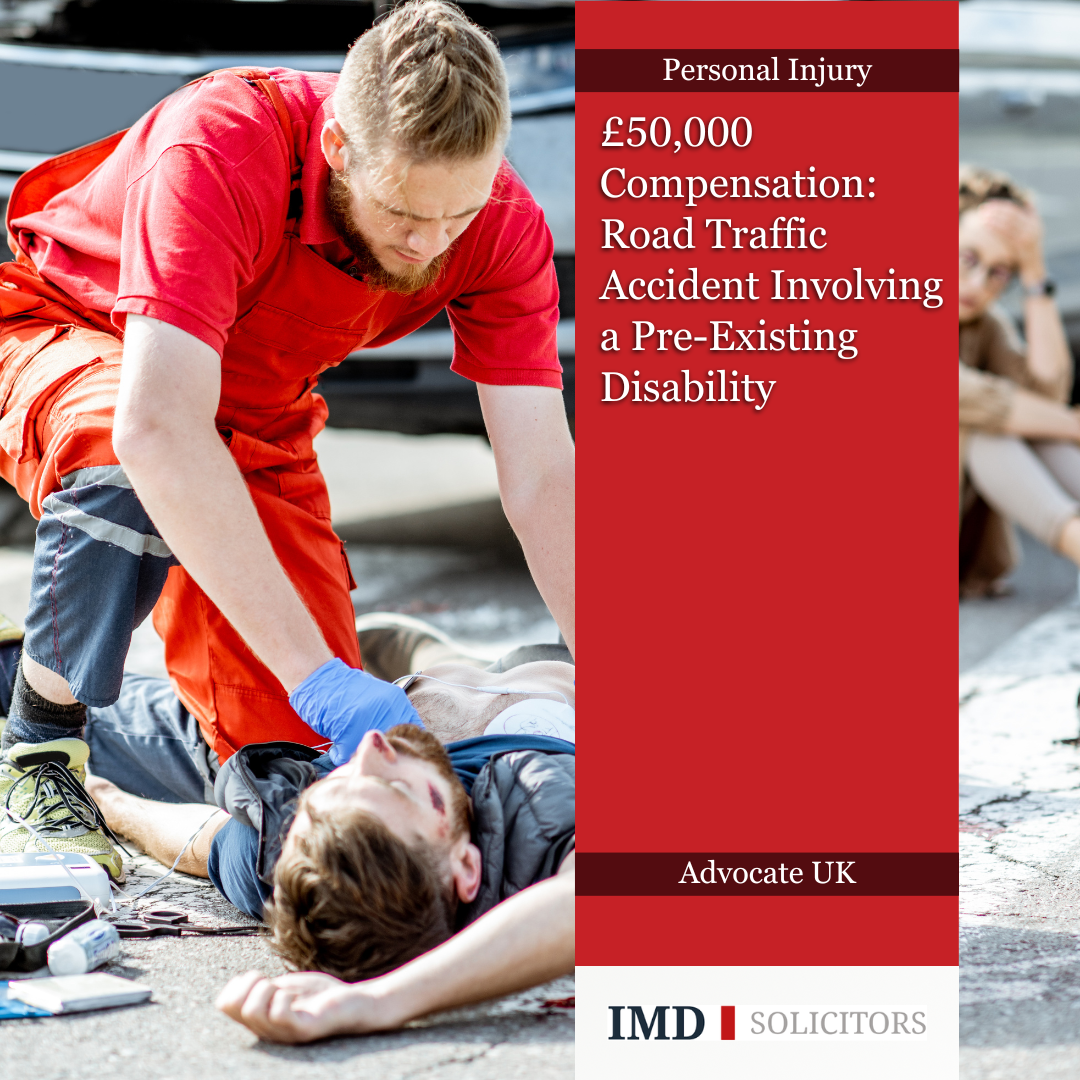
This case study explores a personal injury claim that resulted in a £50,000 compensation payout for a road traffic accident. The case is notable not only for the circumstances of the accident but also for the pre-existing disability of the client, which played a significant role in the legal proceedings and settlement negotiations.
The client, a woman who had been disabled since childhood and relied on crutches for mobility, was involved in a road traffic accident while crossing the street on her way to work. At the time of the accident, the traffic light was green for pedestrians, but the defendant’s vehicle failed to stop, striking her, and causing substantial injuries to her legs and possibly her hip.
The client’s pre-existing condition involved mobility impairments for which her living environment had been specially adapted, including a customised car and home modifications. These factors were critical in assessing the impact of the accident on her already compromised mobility.
The accident made her existing disabilities worse, greatly affecting her daily activities and further limiting her mobility. After the accident, she needed an extra crutch and could no longer do some household tasks that she used to manage before.
One of the primary legal challenges was demonstrating how the accident worsened the client’s condition beyond her pre-existing disabilities. The defence argued that her severe pre-accident disabilities meant the collision had not significantly worsened her condition. To counter this, comprehensive medical records, and expert testimony from orthopaedic specialists familiar with her type of disability were crucial. These experts provided insights into the degree to which the accident had aggravated her condition.
Liability was quickly admitted by the defendant due to the obvious violation of road traffic regulations, specifically running a red light, which is a serious violation given the high risks it poses to pedestrian safety. The extent of compensation, however, was disputed, with initial offers being minimal. The defendant justified this by pointing to the claimant’s pre-existing condition, which they argued diminished the impact of the accident.
Our firm assembled a comprehensive case, fortified by statements from the claimant, her friends, and colleagues, outlining her capabilities before and after the incident. His personal testimony was key in shifting the negotiations to our advantage. As the trial approached, these declarations, along with medical reports, forced the defendant to rethink their position.
Even if the defendant admitted early his fault, the compensation discussions were tough. The defendant’s initial low compensation offers cited the claimant’s pre-existing disability to minimise the accident’s effects. This significantly underestimated the worsening of her condition and the extra distress it caused.
In response, our firm thoroughly prepared to emphasise the risks of hitting a pedestrian at a traffic light and the specific effects on our client. As the trial approached, the growing body of personal and medical evidence made the defendant rethink their position. A clear presentation of our client’s worsened condition, alongside the serious traffic violation, led to a fairer settlement offer. This change recognised the gravity of the accident’s effects, ensuring the compensation reflected the actual harm suffered.
Consequently, just before the case proceeded to trial, the defendant offered a settlement of £50,000. The settlement was a significant achievement, considering the initial reluctance of the defendants to recognise the full impact of the accident on the client’s life.
Key Ideas:
This case shows the complexities involved in personal injury claims where the injured parties have pre-existing disabilities. The key to success in such cases lies in a thorough presentation of the individual’s condition pre- and post-accident, supported by detailed medical evidence and personal testimonies. The case also highlights the necessity of persistent advocacy to overcome attempts by defendants to minimise compensation.
This article is for general information only and does not constitute legal or professional advice. Please note that the law may have changed since this article was published.